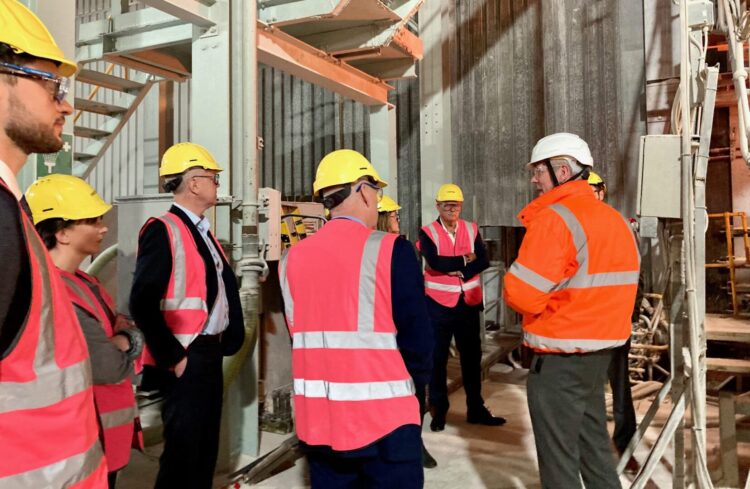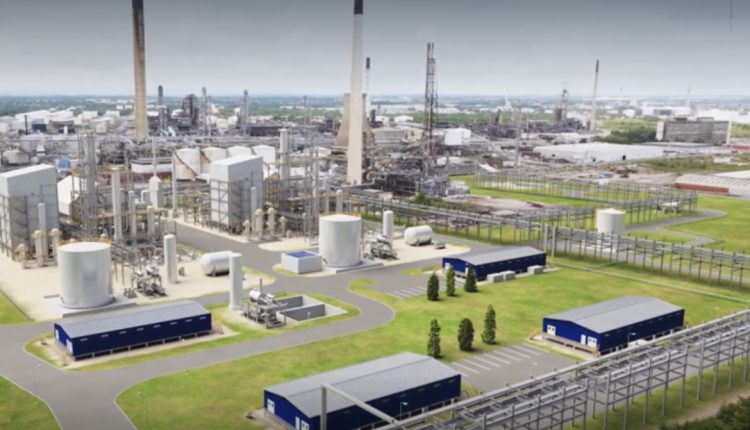A £2bn project to produce hydrogen using natural gas close to the Mersey and store the carbon emissions under Liverpool Bay could be up and running by 2026. Tony McDonough reports

A £2bn project to produce what is claimed will be ‘low carbon’ hydrogen at a plant close to the River Mersey could be operational by 2026.
In an interview with specialist media outlet Energy Voice, EET Hydrogen managing partner Tony Fountain said that although a 2027 start has been widely reported the plant could be producing hydrogen by 2026.
“Production by 2026 is doable, 2027 is the latest. We’d like to do it in two years,” Mr Fountain said in an interview.
Earlier this month LBN revealed EET is close to securing Government funding to press ahead with the hydrogen facility which will be located at the huge Stanlow oil refinery in Ellesmere Port.
Formerly Vertex Hydrogen, EET Hydrogen is a joint venture between Essar Oil UK, owner of the refinery, the second-biggest in the UK, and low carbon energy firm Progressive Energy.
This forms part of the wider HyNet project which aims to produce 4GW of hydrogen by 2030. HyNet is expected to cost the thick end of £20bn in capital expenditure alone, with operating costs adding tens of billions more. Government funding will be critical.
Phase one would see the production of 350MW of hydrogen that would be used to power factories across the North West.
Phase two would take that up to 1,000MW and industrial customers being lined up to use the hydrogen include glass maker Pilkington, consumer products giant Unilever and Data Chemicals.
Crucial to the success of the scheme as a ‘low carbon’ venture is carbon capture and storage (CCS). EET plans to produce hydrogen by burning natural gas. This would usually lead to significant carbon emissions, a major cause of climate change.
However, the company plans to capture these emissions and store them indefinitely in depleted gas fields under Liverpool Bay. Hydrogen produced in this way is known as blue hydrogen.
Even better from the point of view of cutting emissions is green hydrogen. This is where electricity from renewable sources such as wind or solar is put through a machine called an electrolyser. This separates the hydrogen molecules in water.
While HyNet is operating a small green hydrogen pilot project, its main focus will be blue hydrogen. It insists the network will be built in such a way as to enable a switch to green hydrogen further down the line.
CCS is a controversial technology. For the process to be viable it has to successfully capture and store a very high percentage of the CO2. EET’s target is 97%. That level of efficacy has never been achieved on this scale anywhere in the world.
Critics of this method of producing hydrogen claim it is just a way of prolonging the use of fossil fuels.

EET is expecting a final decision from the Government on funding in September. Mr Fountain said the signing of the statement of principles with the Department for Energy Security and Net Zero (DESNZ) marked a “really good day”.
Discussions with the Government will centre around the overall capital and operational cost of the project and, crucially, what is known as the ‘strike price’.
Modelled on contracts for difference, used in renewable power generation, the subsidy will pay the difference between an achieved low-carbon hydrogen sales price and a strike price, with the natural gas price setting a floor.
The strike price is the unit price a low-carbon hydrogen producer needs to cover its production costs, plus an “allowed return on investment”.
“We may be good, but we can’t take a product made from natural gas and sell it at the price of natural gas,” Mr Fountain told Energy Voice. “But just as with wind, we’ll see a big trend that the support needed to make this economic will fall significantly.”
READ MORE: Investor buys huge former Liverpool printing site
On the potential start date, he added: “The difference between us and some other blue hydrogen plans is that we are right there, there’s no need for a big pipeline, there’s no connectivity challenge – and that’s usually a big part of getting a project built.
“… The disparity between some of the bids is interesting. We have a number of techniques to control costs, much of it will be modular built. Our intention is to be by far the lowest cost hydrogen producer in the UK, to give the best value to the Government.”

